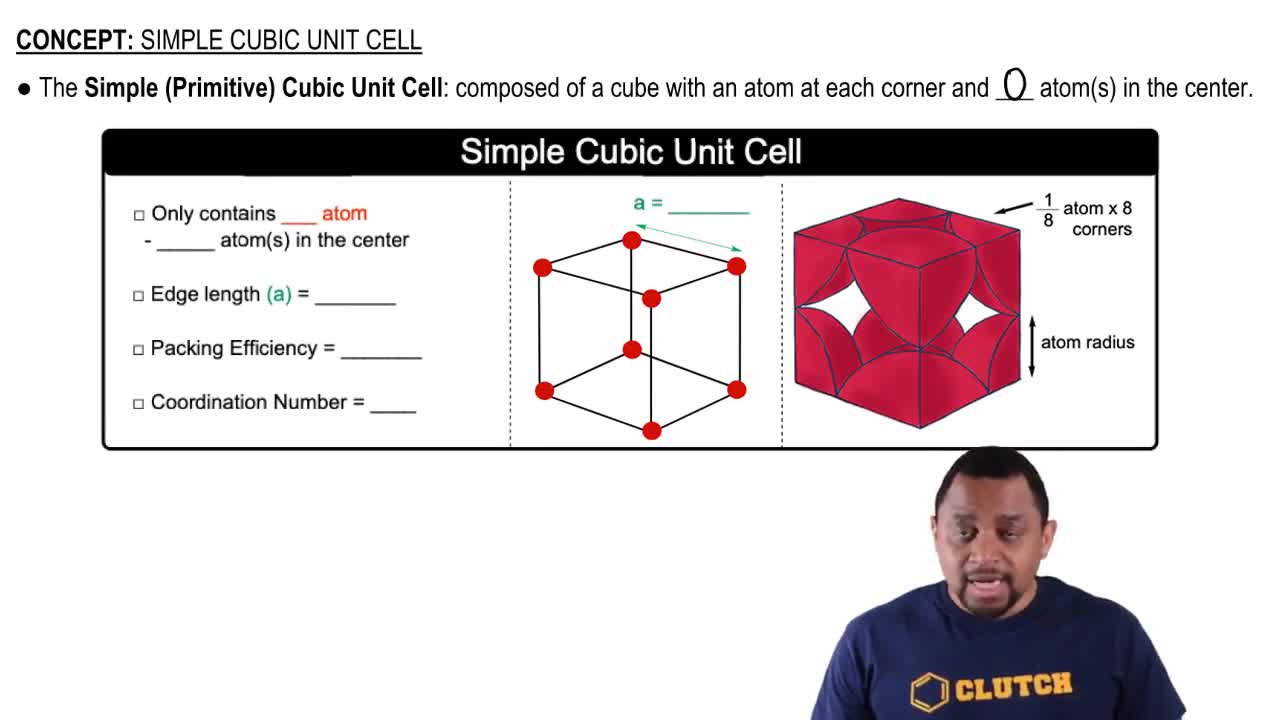Here are the essential concepts you must grasp in order to answer the question correctly.
Unit Cell
A unit cell is the smallest repeating unit in a crystal lattice that reflects the symmetry and structure of the entire crystal. It defines the arrangement of atoms in a solid and is characterized by its dimensions and angles. Understanding the unit cell is crucial for determining the number of atoms it contains, which is essential for calculating properties like density.
Recommended video:
Atomic Packing Factor (APF)
The Atomic Packing Factor (APF) is a measure of how efficiently atoms are packed in a unit cell. It is calculated as the volume occupied by the atoms in the unit cell divided by the total volume of the unit cell. Different metals have different APFs based on their crystal structures, which influences their physical properties and the number of atoms per unit cell.
Recommended video:
Crystal Structure
Crystal structure refers to the ordered arrangement of atoms in a crystalline material. Common types include face-centered cubic (FCC), body-centered cubic (BCC), and hexagonal close-packed (HCP). Each structure has a specific number of atoms per unit cell, which is critical for understanding the material's properties, such as strength and conductivity, particularly for metals like nickel.
Recommended video:

 Verified step by step guidance
Verified step by step guidance


